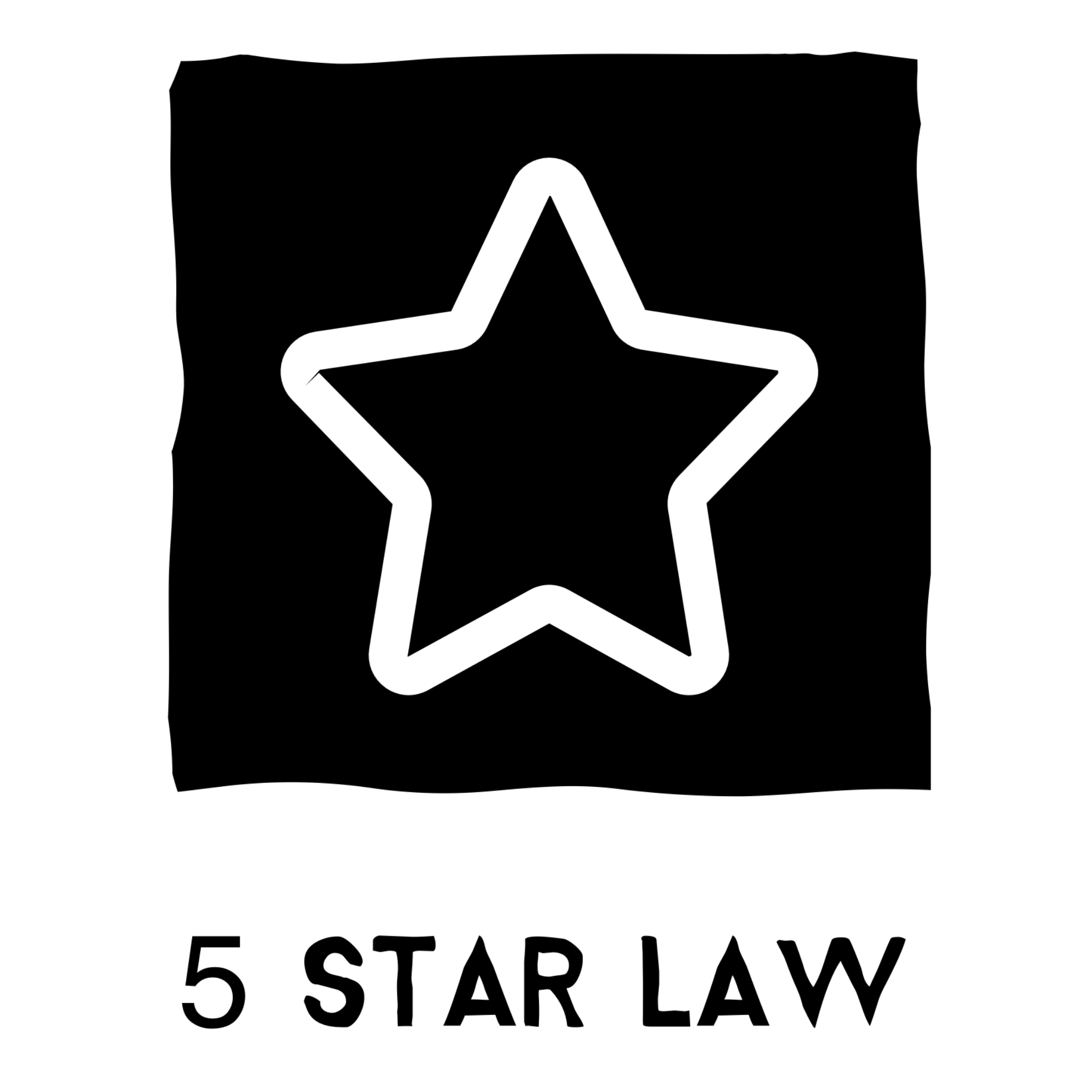Sexual Harassment Lawyer: A Complete Guide
Ever felt cornered with nowhere to turn after facing sexual harassment as an employee victim, enduring harassing conduct from a harasser that created a hostile work environment? That's where an experienced employment attorney, part of a legal team specializing in harassing conduct, steps in as a sexual harassment lawyer, turning the tide in favor of the employee victim. These experienced employment lawyer pros at our law firm are your go-to when navigating the murky waters of workplace harassment, ensuring your voice is heard loud and clear against harassing conduct.
They're not just lawyers; they're advocates fighting tooth and nail to protect your rights and dignity, offering free consultation for persons facing hostile work environments or sexual assault. With their expertise, experienced employment lawyers dissect complex laws, build solid cases, and stand as your unwavering support against intimidation or retaliation in a hostile work environment, including issues related to sex, ensuring every person is represented fairly.
Suppose you're wondering about the role of a sexual harassment lawyer and how they can help you seek justice. In that case, you're about to dive into an enlightening journey that could redefine your path to recovery and empowerment.
Table Of Contents
Key Takeaways
- Variety of Sexual Harassment Forms: Sexual harassment in the workplace encompasses a range of behaviors, including physical, verbal, non-verbal, and digital harassment. Each form creates a violating, intimidating, or hostile work environment and can have a significant negative impact on the affected employee, contributing to a range of psychological issues such as anxiety, depression, and PTSD.
- Legal Framework and Rights of Victims: The legal definition of sexual harassment emphasizes the lack of consent and the subjective experience of the victim. Victims have the right to legal recourse and can seek guidance and representation from sexual harassment lawyers who are knowledgeable about the nuances of employment law and the rights of individuals in the workplace.
- Employer Responsibilities and Preventative Measures: Employers play a crucial role in preventing and combating workplace harassment. They are responsible for establishing clear policies, providing training programs, ensuring confidential reporting channels, and fostering an environment of respect and equality. These steps are vital to creating inclusive environments where employees feel safe and respected, regardless of their identity.
- Intersectionality and Unique Challenges: Sexual harassment often intersects with other societal issues, such as homophobia and discrimination against LGBTQ+ individuals, who may face unique challenges in the workplace. Recognizing and understanding these dynamics is crucial for addressing sexual harassment effectively.
- Role of Sexual Harassment Lawyers: These lawyers assist victims through the complex process of reporting harassment, collecting evidence, and pursuing legal action to hold perpetrators accountable. They guide their clients from filing an official complaint through investigations to potentially litigating in court while fighting for appropriate remedies, including compensation for emotional distress and lost wages.
- Importance of Prompt Legal Advice: To navigate the legal system effectively and strengthen their case, victims of sexual harassment should seek legal advice promptly. This helps avoid common pitfalls and ensures timely compliance with statutes of limitations, which can vary by jurisdiction but are crucial in maintaining the right to seek redress and compensation.
Defining Sexual Harassment
Legal Boundaries
Sexual harassment involves unwelcome sexual advances or behavior that creates an intimidating, hostile, or offensive work environment. It's not just about physical actions but also includes suggestive comments, jokes of a sexual nature, or even displaying sexually explicit material in the workplace.
Legal definitions emphasize consent and the subjective experience of the victim. For instance, what might seem like a harmless joke to one could be deeply distressing to another. This distinction is crucial in identifying law misconduct versus everyday interactions.
Consent Matters
At its core, sexual harassment violates personal boundaries and disregards consent. Consent must be informed, freely given, and can be withdrawn at any time. Without it, any sexual advance is considered unwelcome.
This principle is closely tied to broader social issues like reproductive rights and bodily autonomy. Understanding consent is fundamental to respecting individual rights and preventing harassment.
Social Implications
The impact of sexual harassment extends beyond legal repercussions; it profoundly affects victims' mental and emotional well-being. Many experience anxiety, depression, or even post-traumatic stress disorder as a result of such encounters.
These effects underscore the importance of addressing these incidents' legal and human sides. They remind us that behind every case are individuals whose lives have been profoundly altered.
Homophobia Context
Sexual harassment also intersects with issues like homophobia and anti-gay laws. LGBTQ+ individuals often face unique challenges in this regard, including derogatory remarks or unwanted advances based on their sexual orientation.
Recognizing these dynamics is vital for creating inclusive environments where everyone feels safe and respected regardless of their identity.

Commonality of Workplace Harassment
Scope and Scale
Workplace harassment remains a pervasive issue, affecting countless industries worldwide. Statistics reveal that many employees have experienced some form of hostile work environment. This includes unwelcome comments, advances, or behavior that creates an offensive work environment.
The numbers remain alarmingly high despite employers' efforts to address these concerns. The Equal Employment Opportunity Commission (EEOC) reports thousands of complaints annually, highlighting the widespread nature of the problem.
Underreporting Issues
Many victims choose not to report incidents due to fear of retaliation or disbelief from their employer. This silence contributes to underreported statistics, making it difficult to grasp the full extent of workplace harassment.
Employees often feel trapped, fearing job loss or damage to their professional reputation if they speak up. This fear is compounded by a lack of trust in employers' mechanisms for reporting such incidents.
Victim Diversity
Harassment in the workplace does not discriminate. It targets individuals regardless of gender, age, position, or industry. Both men and women can be victims, and perpetrators can be found at every organizational level.
This diversity among victims underscores the importance of creating a safe and inclusive work environment for all employees. Employers must recognize that anyone can be targeted and take steps to protect every workforce member.
Employer Responsibility
Employers play a crucial role in combating workplace harassment. They are responsible for fostering an environment where all employees feel safe and respected. This includes implementing clear policies, training on what constitutes harassment, and establishing effective reporting mechanisms.
Types of Sexual Harassment
Physical Harassment
Physical harassment involves any unwanted physical contact. This can range from seemingly benign actions like patting or hugging to more aggressive acts such as groping or assault. Victims often feel violated and powerless as these actions invade their personal space without consent.
It's crucial to recognize that what might seem like a casual touch to one person can be deeply unsettling to another. The critical issue here is consent, or rather the lack of it, which turns an act into harassment.
Verbal Harassment
Verbal harassment includes inappropriate comments, jokes, or suggestions that are sexual. These remarks can be directed at an individual or someone in their presence. Such comments not only create an uncomfortable environment but also demean the target based on their sex or sexuality.
This type of harassment is particularly insidious because it can be disguised as humor or casual conversation, making it difficult for victims to report without fear of being dismissed or not taken seriously.
Non-Verbal Harassment
Non-verbal harassment doesn't involve physical contact or words but can be just as harmful. It includes suggestive looks, leering, or the display of sexually explicit materials in a shared space. These actions send a clear message without saying anything directly, contributing to intimidation and discomfort.
The subtlety of non-verbal harassment makes it challenging to address since it relies heavily on interpretation and the context in which it occurs.
Digital Harassment
In today's digital age, sexual harassment has found a new arena: emails, texts, social media messages, and other online platforms. Digital harassment involves sending unwanted sexual advances, requests for sexual favors, pornographic images, or other sexually explicit material electronically.
This form of harassment is particularly invasive as it breaches the victim's personal space virtually anywhere and anytime. The anonymity and reach of digital platforms can embolden harassers and make them harder to hold accountable.
Quid Pro Quo Explained
Definition
Quid pro quo harassment takes place when job benefits hinge on sexual favors. This term, translating to "something for something," marks a clear abuse of power in the workplace.
Employers or supervisors might suggest that an employee can secure a promotion, avoid demotion, or receive special projects if they comply with sexual advances. Such actions are unethical and illegal, violating fundamental employment laws.
Manifestations
Promotions and job retention often become bargaining chips in these scenarios. Employees might face a proposition: agree to the supervisor's advances and get the job advancement they've been working towards, or refuse and risk their career stalling.
Favorable work assignments also fall prey to this form of harassment. An employee could be offered lead roles on high-profile projects or more desirable tasks in exchange for acquiescence to unwelcome sexual conduct. These situations create an uneven playing field, where consent is coerced through professional leverage rather than freely given.
Illegality
Quid pro quo harassment stands as a blatant violation of employment law. It undermines the integrity of the workplace and inflicts emotional distress on victims. Laws at both federal and state levels offer protection against such practices, ensuring that employees don't have to choose between their dignity and their livelihood.
Victims have the right to seek legal recourse, often turning to sexual harassment lawyers who specialize in navigating these complex cases. These legal professionals work tirelessly to hold perpetrators accountable and restore justice for those affected by quid pro quo harassment.
Role of Sexual Harassment Lawyers
Legal Guidance
Sexual harassment lawyers play a crucial role in guiding victims through the complex process of reporting harassment and pursuing legal action. They understand the nuances of employment law and how it applies to sexual harassment cases.
Victims often feel overwhelmed and unsure about the steps they should take. A skilled harassment lawyer can outline a clear path forward, ensuring all necessary reports are made to the proper authorities. They also advise on how to document incidents effectively, which is vital for building a solid case.
Evidence Collection
Evidence is critical in proving sexual harassment; experienced employment lawyers excel. They know what evidence will strengthen a case and how to obtain it legally.
It's not just about collecting emails or messages; it involves understanding workplace dynamics and identifying witnesses supporting the victim's claims. An experienced employment attorney can navigate these challenges efficiently, ensuring no stone is left unturned.
Advocacy and Remedies
Advocating for victims' rights is at the heart of what sexual harassment lawyers do. They're not just legal representatives but champions for justice who fight to hold perpetrators accountable.
These lawyers work tirelessly to secure appropriate remedies for their clients, including compensation for emotional distress, lost wages, or even reinstatement if wrongful termination occurs. Their advocacy extends beyond the courtroom as they often push for policy changes within organizations to prevent future harassment.
Legal Process and Filing Claims
Reporting Harassment
The journey toward justice begins with reporting the harassment to the employer or human resources department. This step is crucial as it officially logs the complaint, setting the stage for further action. Victims should be detailed in their reports, documenting every incident with dates, times, and witnesses, if any.
They must understand that this initial reporting is protected under federal law. It's designed to safeguard their position at work while addressing the grievance.
Documentation Importance
Keeping meticulous records is critical in building a solid case. Victims should document all interactions related to the harassment, including emails, texts, and notes from conversations. This evidence forms the backbone of their claim, illustrating a pattern of behavior that violates workplace policies and laws.
Timelines are equally critical. The statute of limitations for filing claims with government agencies can vary by jurisdiction but generally ranges from 180 days to a few years. Missing these deadlines can forfeit one's right to pursue legal action.
Legal Consultation
Seeking a free consultation with a sexual harassment lawyer or law firm is a strategic next step. They offer expert advice on the strength of the case and guide victims through complex employment laws and procedures. With their expertise, victims can navigate the legal system more effectively, avoiding common pitfalls that could weaken their case.
Lawyers also help determine whether to resolve the matter internally or proceed with formal legal action against the perpetrator or business.
Filing Claims
The actual process of filing claims involves several steps:
- Submitting an official complaint to relevant state or federal agencies.
- Waiting for these agencies to investigate or issue a "right to sue" letter.
- Pursuing litigation in court with the support of a legal team if necessary.
Throughout this process, having a lawyer specializing in sexual harassment cases ensures that all filings are accurate and deadlines are met.
Time Limits for Claims
Statute Significance
The statute of limitations sets a deadline for filing sexual harassment claims. It varies by jurisdiction but typically ranges from 180 to 300 days after the incident. This timeframe is crucial in legal proceedings.
Victims must act swiftly to preserve their rights. The clock starts ticking the moment the harassment occurs. Understanding this limit is essential for a successful claim. It ensures that evidence remains fresh and testimonies are more reliable.
Legal Urgency
Seeking legal advice promptly cannot be overstressed. With time being of the essence, consulting a sexual harassment lawyer immediately can make or break a case. They guide victims through the complex legal landscape.
They also help identify all relevant incidents that could extend or impact the statute's application. Their expertise is invaluable in navigating these time-sensitive matters.
Exceptions Exist
In some cases, exceptions to the statute of limitations may apply. Certain jurisdictions allow for extensions under specific circumstances, such as continuous harassment or delayed discovery of harm.
These exceptions highlight the importance of expert legal counsel. A knowledgeable attorney can assess if an exception applies, potentially extending the filing window.

Victim Compensation Insights
Economic Damages
Victims of sexual harassment may pursue economic damages. These cover losses that have a direct impact on their finances.
Economic damages can include lost wages if the victim needs to take time off work due to the incident. They also cover potential future earnings loss, especially if the victim had to leave their job or was unfairly terminated because of the harassment. This compensation aims to restore the financial stability of the employee victim.
Calculating these damages involves examining current and future income losses. Experts might be hired to estimate these figures accurately.
Emotional Distress
Another critical area of compensation is for emotional distress caused by the incidents. The experience of sexual harassment can leave deep psychological scars.
Victims can seek compensation for therapy costs, pain and suffering, and other non-economic impacts. The severity of emotional distress and its effect on an individual's daily life significantly determine the compensation amount. Courts recognize that these experiences can profoundly affect a person's mental health and well-being.
Punitive Damages
In cases where the perpetrator's misconduct is particularly egregious or the employer's negligence is apparent, punitive damages may be awarded.
Punitive damages punish the perpetrator or employer and deter future misconduct. They go beyond simply compensating the victim and address broader issues of justice and accountability in workplace conduct.
The determination of punitive damages depends heavily on the specifics of each case. It factors in the severity of the harassment, any previous incidents, and how the employer responded to complaints.
Preventing Sexual Harassment
Policy Creation
Employers must draft clear policies against sexual harassment. These policies should define what constitutes harassment, including physical and verbal behaviors. They should cover all forms of harassment, from sexual advances to offensive comments regarding sexual orientation.
Policies need to be comprehensive. They should outline the steps for reporting harassment, and employees must understand these procedures well.
Training Programs
Organizations should conduct regular training sessions. These programs educate employees about sexual harassment law and the importance of a respectful workplace. Training also helps employees recognize harassing conduct.
Both employees and supervisors must participate. This ensures everyone understands their role in prevention.
Reporting Channels
Setting up confidential reporting channels is vital. Victims often fear retaliation, making them hesitant to come forward. Confidential channels encourage them to report incidents without fear.
These channels should offer multiple reporting methods, such as through a designated officer or an anonymous hotline.
Prompt Action
A prompt response to harassment complaints is critical for prevention. It sends a strong message that the organization does not tolerate harassing behavior.
Immediate investigation and appropriate actions are necessary once a complaint is filed.
Culture of Respect
Creating a culture of respect and equality is fundamental. All employees should feel valued regardless of sex or sexual orientation. A respectful environment discourages harassers and empowers victims to speak up.
Organizations can foster this culture by highlighting stories of empowerment and supporting diversity initiatives.
Summary
Understanding the ins and outs of sexual harassment law is crucial for anyone navigating these waters, whether you're a victim seeking justice or an employer aiming to create a safe work environment. You've learned about the different types of harassment, the critical role of sexual harassment lawyers, how to file claims, time limits, compensation, and prevention strategies. With this knowledge, you're better equipped to tackle these issues head-on.
Remember, if you or someone you know is facing sexual harassment, reaching out to a specialized lawyer can make all the difference. They'll guide you through the legal maze and fight for the compensation and justice you deserve. Don't let hesitation hold you back—taking that first step towards seeking help is pivotal. Let's ensure safe workplaces for everyone by standing against sexual harassment together.
Frequently Asked Questions
Related Post
Discrimination Lawyer
Over 70% of people have faced some form of discrimination at work but didn't know where to turn for claims.
Read MoreWrongful Termination Lawyer
Over 70% of employees have felt they were wrongfully terminated for unlawful or discriminatory reasons or due to medical leave or intolerable working conditions.
Read MoreEmployment Lawyers
Did you know that many workers face unfair treatment at work? Still, only a fraction reach out to employment lawyers for help with employee rights, company policies, and information on professionalism.
Read MoreSports Lawyer
Have you ever wondered what stands between a promising athlete's career and the legal hurdles that could derail it? A sports attorney, often supported by sports law attorneys and other sports law practitioners, including a sports agent, plays a crucial role.
Read MoreSports Organization Governance Lawyer
Navigating the complex world of sports organization governance requires a specialized skill set that blends legal expertise with a deep understanding of the sports industry's unique dynamics, including administrative law and critical issues.
Read MoreMedical Innovation Lawyer
Have you ever wondered how groundbreaking medical technologies from innovative healthcare and health technology companies navigate the complex web of legalities with sophisticated health law technology to reach the market as a healthcare innovator?
Read More






